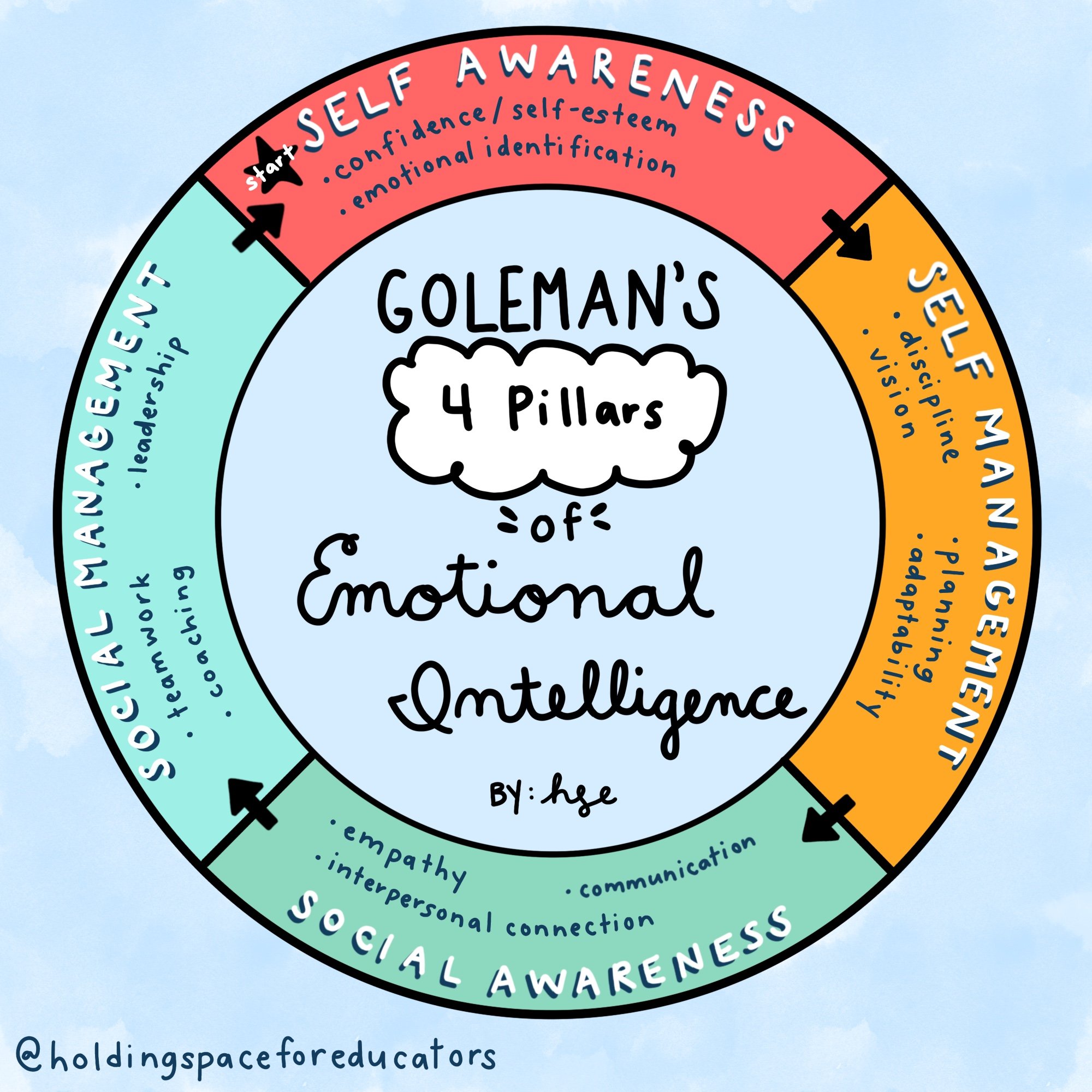Unpacking & Applying Emotional Intelligence
“When will these high schoolers see how this is organized?”
“My admin seems to be making decisions without really seeing what the issues of the team are.”
“How do I stop reacting like this?”
Most educators operate with high levels of emotional intelligence. I think you’ll struggle to find someone who disagrees. As teachers, we are attuned to our students, can quickly read the room to detect when something is off, and strive towards bigger social goals like developing our students into skilled leaders and members of a larger community. These are all workings of high emotional intelligence.
But just because we have something, does that mean we know how it works? Do we understand the mechanics of emotional intelligence? Like where it starts, its sequence, or how one recognizes and draws it out of their students?
Let’s take a look under the hood. Daniel Goleman’s powerful framework identifies four pillars of emotional intelligence and models how they naturally build, or flow, one to another.
The sequence goes:
Self Awareness ➪ Self Management ➪ Social Awareness ➪ Social Management
The first two pillars have to do with our relationship with ourselves.
1) Self-Awareness. It starts with being aware, having an understanding of ourselves as we actually are. You can’t manage emotions you don’t know you have, and you can’t understand other’s emotions if you aren’t able to understand your own. So we have to start here.
Examples of high self-awareness: being able to name one's own emotions, impact, and motivations.
2) Self-Management. When we have good self-awareness, we can move towards self-management (also called self-regulation). This pillar goes one step further than the first, it is about choosing one’s actions.
Examples of self-management skills: redirecting impulses, thinking before acting, and regulating one’s own emotional response.
The final two pillars have to do with how we relate to others.
3) Social Awareness. When we have good self-awareness, we can also move towards social awareness, which is the ability to recognize others’ emotions.
Examples of high social awareness: having empathy, being able to read people’s body language, and recognizing what is going on at an organizational level.
4) Social Management. The final pillar is social management, which is the ability to successfully manage relationships and teams in a way that respects every member.
Examples of social management skills: inspiring and developing the skills of others, managing conflict well, and working collaboratively through various group dynamics.
The information Goleman’s model provides can have a very meaningful impact in our work as educators. If used carefully, it won’t just be something that’s “good to know,” but it will become a practical and valuable tool for our classrooms, co-teaching relationships, board meetings, and much more.
Questions to help you go deeper:
Which pillar/pillars of emotional intelligence do you feel strong in? Name some recent examples.
Which pillar/pillars of emotional intelligence seem difficult to access right now?
If you want help identifying blind spots, who do you trust that could give you honest, helpful feedback about your strengths and areas for improvement?
Download our free resource! Brainstorm ways that each pillar plays out in your teaching world. (Example: “What does self-management look like in my professional context?” - Going on a walk at lunch to decompress before 4th block, taking a moment to regulate my response before addressing Sam’s outbursts in class, and waiting to send some emails until after I get some distance and come back to reread them.)
If you or a colleague desire to help a student/students increase their own self-awareness, brainstorm what that might look or sound like.
If your student shows high self-awareness, how do you or might you help them increase self management? What about social awareness?
Consider how emotional intelligence plays a role on the teams you are a part of. How can Goleman’s framework and vocabulary for emotional intelligence help your team move towards health and high performance?



